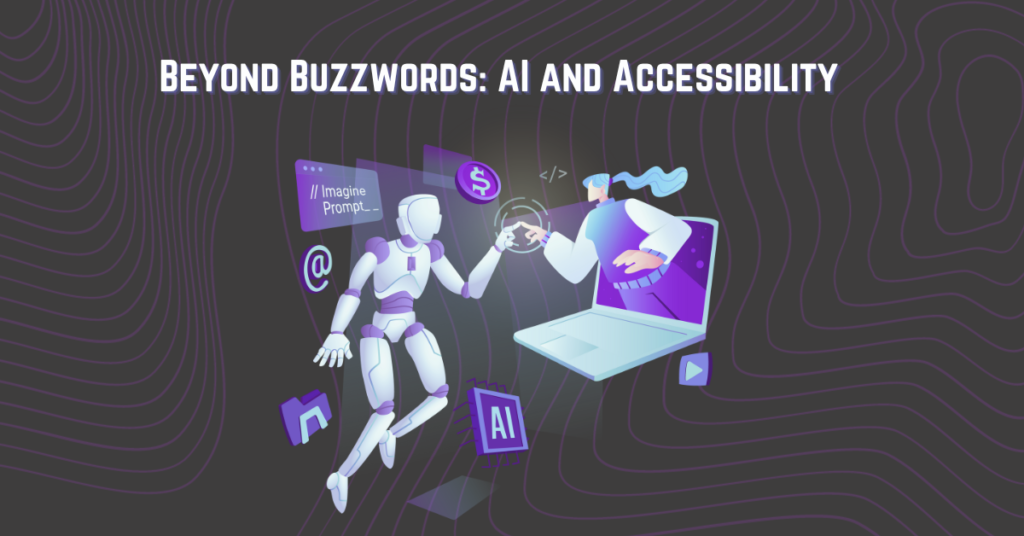Introduction

In a world where technology is rapidly advancing, we often find ourselves marveling at the latest gadgets and gizmos, all designed to make our lives easier. But for individuals with disabilities, these advancements are not just conveniences — they’re a gateway to accessibility and independence. Artificial Intelligence (AI) and Machine Learning (ML) are leading this revolution, transforming the landscape for individuals with disabilities. Let’s take a closer look at how these incredible technologies are breaking down barriers and creating a more inclusive world.
The Power of AI and ML
AI and ML are much more than just industry buzzwords. They’re powerful tools that are redefining how we interact with the world. From predicting weather patterns to recommending our next Netflix binge, these technologies are omnipresent. But their potential doesn’t stop at convenience; they’re paving the way for a new era of accessibility.
AI and Accessibility: Breaking Down Barriers
AI is helping individuals with disabilities overcome everyday challenges in ways we never thought possible. AI-powered applications can now convert sign language to text in real-time, offer descriptive audio for visually impaired individuals exploring new places, and even predict seizures in people with epilepsy, alerting them and their loved ones before an episode occurs.
Machine learning, a subset of AI, is also making significant strides. By recognizing patterns and learning from data, ML can adapt to users’ needs and preferences, leading to personalized assistive tools. These technologies are transforming smartphones, computers, and smart home devices into personal accessibility aids.
AI and ML in action
Voice Recognition
Consider voice recognition software. Initially designed for convenience, it has become a lifeline for those with mobility impairments. By learning and adapting to an individual’s voice and commands, people can control their environment, dictate messages, and navigate the internet, all by voice alone.
Autonomous Vehicles
Autonomous vehicles are another field where ML is making a significant impact. By learning and responding to real-time traffic conditions, self-driving cars promise a future of independence for individuals who are unable to drive due to physical or cognitive impairments.
Predictive Text and Eye-Tracking
Predictive text and eye-tracking technology are also revolutionizing communication for individuals with disabilities. ML algorithms learn from each user’s unique communication style and predict what they will say next, reducing the effort and time it takes to compose messages.
The Future of Accessibility with AI and ML
As we look to the future, the possibilities for AI and ML in the field of accessibility are infinite. As these technologies become more sophisticated and widely adopted, they will continue to shape a world where individuals with disabilities have the same access and opportunities as everyone else.
Final thoughts
From voice recognition to autonomous vehicles, AI and machine learning are not just enhancing accessibility; they’re revolutionizing it. As we stand on the brink of this new era, we must continue to push boundaries, question limitations, and envision a world where technology paves the way for inclusivity and independence for all. Today, we are not just predicting the weather or our next Netflix show, but a future of limitless potential and accessibility.
READ: Inclusive Digital Classrooms: Crafting E-Learning Spaces For Every Learner

